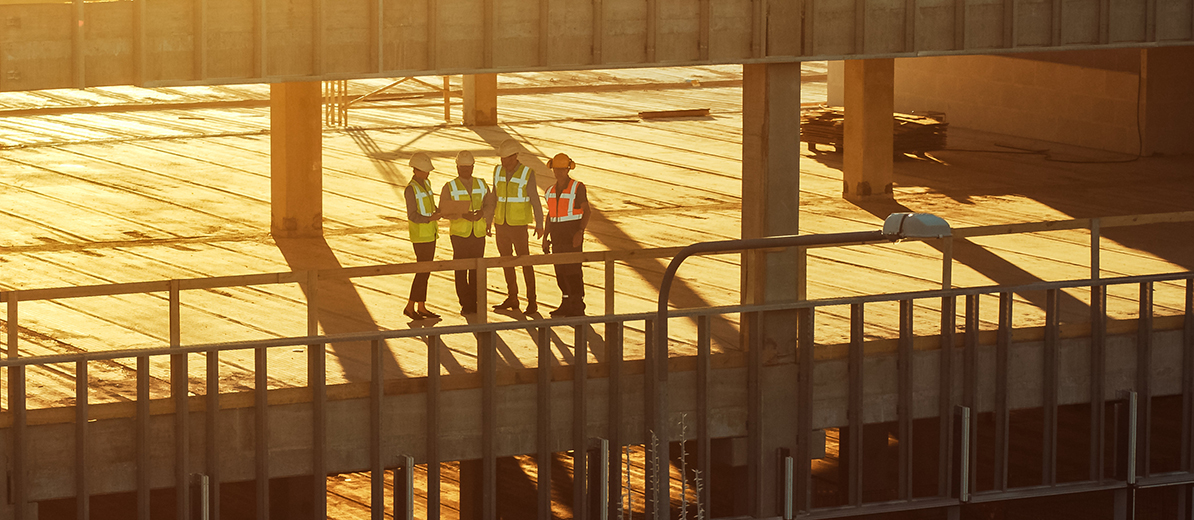
April 21, 2025
Construction Labor Strikes: Recommendations for Contractors
This is the last blog post in a five-part series about construction labor strikes and contractors’ potential recovery of delay and damages, along with case examples on the subject. The first post provides a brief history of the formation of labor unions and types of labor strikes, and the second post discusses entitlement and excusable delay. The third post focuses on compensable delay, and the fourth post addresses inexcusable or non-compensable delay. This post offers recommendations for contractors facing labor strikes.
The best defense against construction strikes is to resolve labor disputes before they deteriorate into strikes. Contractors should strive for straightforward, efficient, and cooperative labor/management relationships and thoroughly investigate these relationships with their subcontractors and suppliers.
In the event of a potential delay due to a strike, it is important that the contractor inform all relevant parties in a timely manner in accordance with contractual notice requirements. Events should be thoroughly documented to support delay claims and to permit the proper assessment of damages.
Excellent support documents include any collective bargaining agreements, job site logs, emails, internal and external conversation memoranda, progress meeting minutes, Critical Path Method (CPM) schedules, job cost reports, accounting records, and delay notice correspondence. If a strike occurs, a contractor may benefit from the following recommendations:1
- Verify if the cause of the strike was an unfair labor practice or an economic issue. This will determine how to deal with the crisis.
- Never discharge employees if they are engaging in a lawful, protected strike, whether for economic protests or alleged unfair labor practices.
- If strikes are unprotected2 or unlawful, a contractor may discharge participating employees.
- A contractor may permanently replace striking employees connected with an economic strike. However, if strikers have not been replaced at the end of an economic strike, the contractor must reinstate them.
- Economic strikes can easily become unfair labor practice strikes. A contractor must be careful not to commit such an act.
- Picketing takes many forms and has many objectives. Always read picket signs to accurately advise counsel of your situation when calling on legal advice. Picketing or other activity arising out of a labor dispute has limitations.
- Recognitional or organizational picketing must cease after 30 days unless a petition for an election is filed with the NLRB.
- It is illegal for a union to picket or coerce a neutral or secondary employer to cease doing business with the primary employer with whom the union has a dispute. This is called a secondary boycott, according to the Taft-Hartley Act. Picketing at a construction site must be limited to the time and place where the primary employer involved in the dispute is likely to be found.
- In confronting secondary boycotts, the contractor may use a “reserved” gate for its forces at a construction site. If proper notice and posting of all gates is done correctly, the union may only picket at that gate.
- A contractor can sue a union for damages in federal court if the union breaches a collective bargaining agreement or commits an unfair labor practice.
- Labor dispute violence is unlawful, and injunctions can be obtained to stop violence.
If a strike occurs, the contractor may be entitled to an excusable delay (time, no money), a compensable delay (time and money), or an inexcusable delay (no time or money). Under U.S. federal contracts, the contractor’s entitlement depends on whether the strike was unforeseeable by, beyond the control of, and without the fault or negligence of the contractor. The contractor also must prove that the strike caused a delay, with necessary evidence, analysis, and support, and the contractor must mitigate the effects of a strike by knowing its rights and the union’s rights.
1 Long International is not providing legal advice. However, the recommendations listed in this blog post are taken from the following article: J. Richard Margulies and Andrew W. Stephenson, Braude, Margulies, Sacks & Rephan, “Construction Strikes & Picketing,” Construction Briefings, No. 86-8, July 1986.
2 An unprotected strike is generally known as a labor strike that does not comply with the legal requirements set by labor laws.
ADDITIONAL RESOURCES

Blog
Discover industry insights on construction disputes and claims, project management, risk analysis, and more.
MORE

Articles
Articles by our engineering and construction claims experts cover topics ranging from acceleration to why claims occur.
MORE

Publications
We are committed to sharing industry knowledge through publication of our books and presentations.
MORE
RECOMMENDED READS
Construction Labor Strikes: History and Types
This is the first post in a five-part series about construction labor strikes and contractors’ potential recovery of delay and damages.
READ
Construction Labor Strikes: Entitlement and Excusable Delay
This is the second post in a five-part series about construction labor strikes and contractors’ potential recovery of delay and damages.
READ
Construction Labor Strikes: Compensable Delay
This is the third post in a five-part series about construction labor strikes and contractors’ potential recovery of delay and damages.
READ

